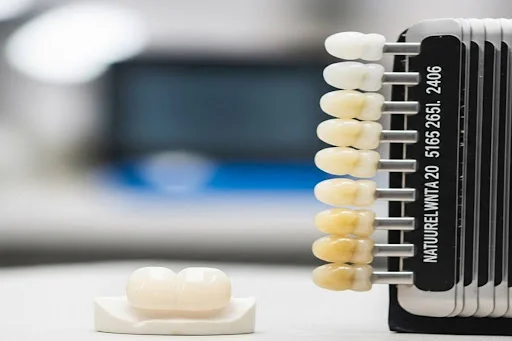In the world of digital design, first impressions are everything.
Glassmorphism has emerged as the secret weapon for brands that want to scream “luxury” without saying a word.
This elegant design trend, characterized by frosted glass effects and subtle depth, taps into powerful psychological cues that consumers associate with high-end experiences.
From Apple’s sleek interfaces to premium fashion e-commerce sites, glassmorphism creates an instant perception of quality and sophistication.
It’s not just about aesthetics; it’s about triggering the same subconscious responses we have when interacting with physical luxury goods.
In this article, web design experts from Alpha Efficiency will break down exactly how this effect works its magic and why luxury brands are adopting it as their digital signature.
How This Design Trend Can Turn Your Site Into A Premium Experience
Let’s explore in depth how this design trend can help you give your business website a sophisticated feel:
The Subtle Power of Depth & Transparency
Glassmorphism’s layered transparency instantly upgrades a site’s feel. It creates a physical sense of depth that flat designs lack.
This trend mimics luxury materials, such as frosted glass, triggering subconscious associations with quality. Users perceive your brand as more premium and intentional.
The effect works silently but powerfully. Studies show dimensional interfaces boost engagement by making interactions feel more tangible.
For luxury brands, it’s visual shorthand for sophistication. No heavy redesign needed; just smart application of light and layers.
Light, Shadow, and the Illusion of Elegance
Strategic lighting transforms digital interfaces into premium experiences. Soft glows and delicate shadows create a sense of refined craftsmanship.
This subtle dimensionality mirrors high-end physical products. It makes your UI feel intentionally designed, not just assembled.
The effect is psychological luxury. Users instinctively respond to these cues as markers of quality and attention to detail.
For brands, it’s an effortless way to stand out. These lighting techniques elevate even simple layouts into sophisticated compositions.
Frosted UI Feels Exclusive (Like VIP Glass Doors)
The blurred transparency effect works like a velvet rope for your website, creating a seamless and inviting experience. It creates instant psychological prestige, just like exclusive storefronts.
Users unconsciously associate frosted elements with high-end spaces. This isn’t just design; it’s behavioral science working for your brand.
For premium brands, this subtle cue builds status without overt boasting. It’s exclusivity, designed.
Brand Identity on Glass: Instant Recognition, Instant Class
Glassmorphism transforms your branding into a premium signature style. Your colors and logos gain a sophisticated, elevated presentation through subtle transparency.
This practice fosters instant visual recognition while adding a luxurious polish. It’s like putting your brand behind museum glass; same identity, but more valuable.
The effect works across every touchpoint. From buttons to headers, your UI gains cohesive elegance that customers remember.
It’s the ultimate two-for-one: stronger identity and premium perception in one stylish technique.
Glassmorphism Best Practices: Elevate Your Website The Right Way
Wondering how to master this design technique? Follow these 6 best practices:
Blur, But Don’t Blur Out: Perfecting Your Background Layers
To nail the glassmorphism trend, the magic is in the balance.
Too much blur turns elegant transparency into visual noise.
Aim for a 5-8px blur radius; enough to create depth, but keep content legible.
Always test your effect against real text and images. The goal? A subtle “frosted window” feel, not a smudged mess.
For optimal results, darker backgrounds require slightly less blur to maintain the same luxurious effect while preserving clarity.
The 60% Transparency Rule: Why Slightly Opaque Wins
Glassmorphism loses its magic at extremes. 60% opacity hits the sweet spot – transparent enough to suggest luxury, but solid enough to remain functional.
Go lower, and text becomes unreadable. Go higher, and the effect disappears. This balance maintains usability while delivering premium aesthetics.
Dark UI elements often work best at 70% opacity to preserve contrast. Test with your brand colors to find your perfect percentage.
Color Harmony: Making Glass Effects Pop Without Clashing
Your glass panels need the right backdrop. Pair cool transparency with warm, muted backgrounds for maximum contrast.
Avoid pure whites; soft off-whites or subtle gradients create a better sense of depth. For dark modes, rich navy or charcoal works better than true black.
Always check text contrast ratios. Glassmorphism should enhance readability, not compete with it.
Lighting Direction Matters: How to Fake Realistic Depth
Consistent light sources sell the illusion. Choose one direction (usually top-left) for all your glass elements’ highlights and shadows.
Subtle inner glows (1-2px) enhance the frosted effect. But skip heavy drop shadows; they break the fragile glass aesthetic.
For extra realism, slightly lighten the glass edge where “light” would hit. This tiny detail boosts perceived quality.
Mobile-First Glassmorphism: Avoiding Performance Pitfalls
Complex blurs can lag on mobile. Use backdrop-filter sparingly and test on older devices.
For critical elements, consider static blurred PNGs instead of live effects. They look identical but render faster.
Progressive enhancement is key: deliver solid fallbacks for browsers that don’t support glass effects.
When to Say No: Glassmorphism That Actually Serves UX
Not every element needs frost. Reserve glass effects for headers, cards, or CTAs; never body text or critical info.
Ask: “Does this add clarity or just decoration?” If it distracts from functionality, skip it.
The best luxury designs use glassmorphism as seasoning, not the main ingredient. Less is more.
Take Your Luxury Brand To The Next Level with Glassmorphism Design
Glassmorphism isn’t just a trend; it’s a strategic tool for luxury branding. When executed thoughtfully, it elevates user perception, reinforces exclusivity, and creates memorable digital experiences.
But remember, true sophistication lies in restraint. Use these techniques purposefully to enhance—not overpower—your brand’s essence.
Ready to transform your digital presence? The difference between ordinary and exceptional is just one perfectly blurred layer away.









